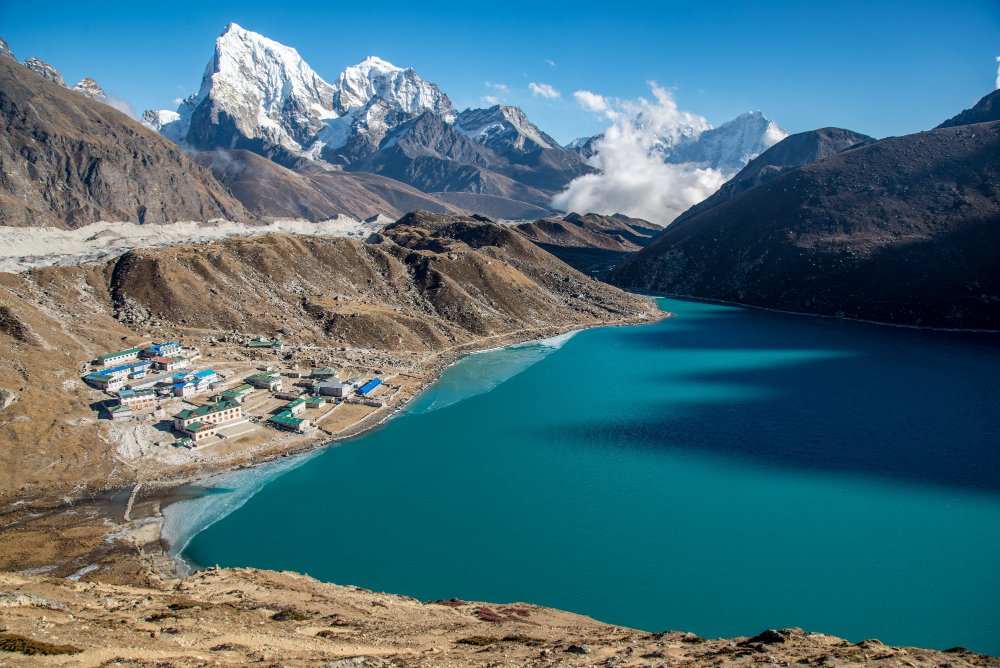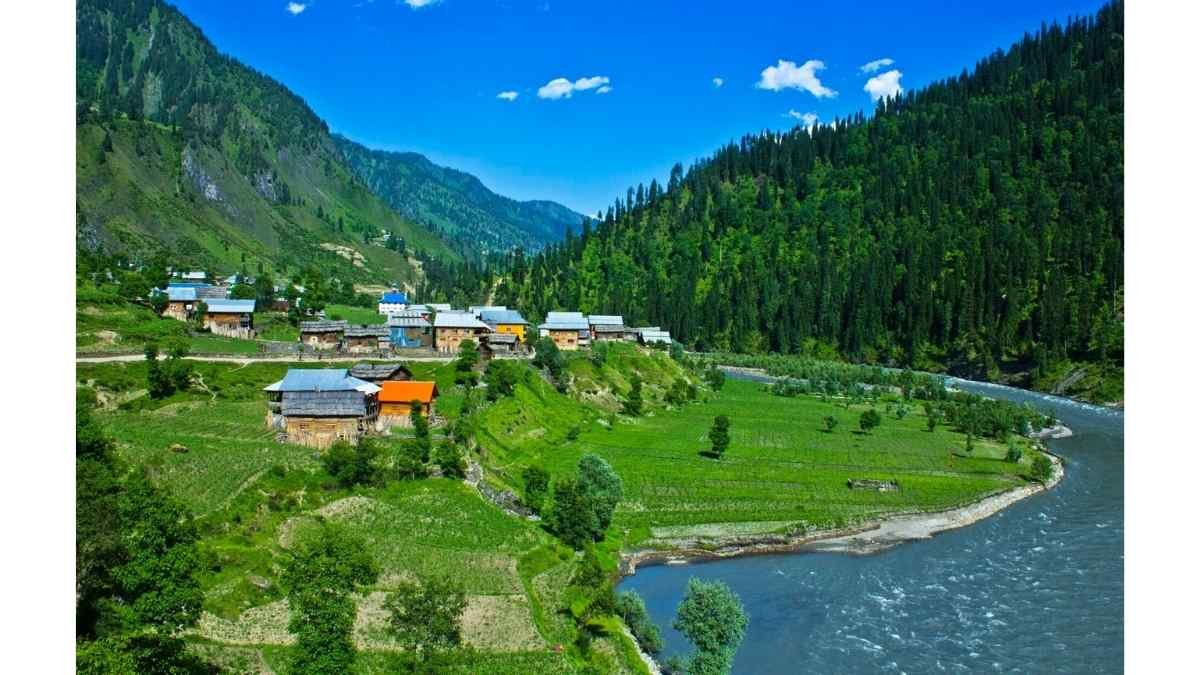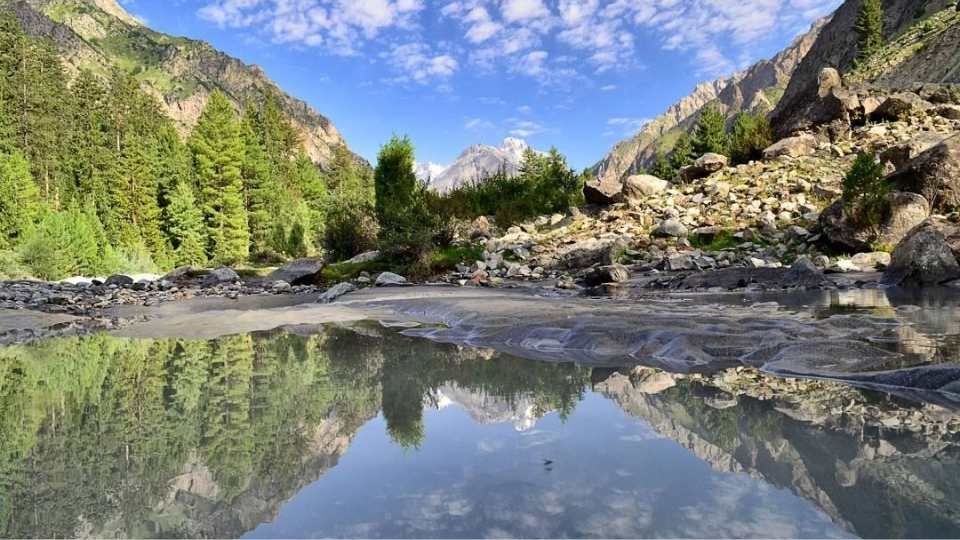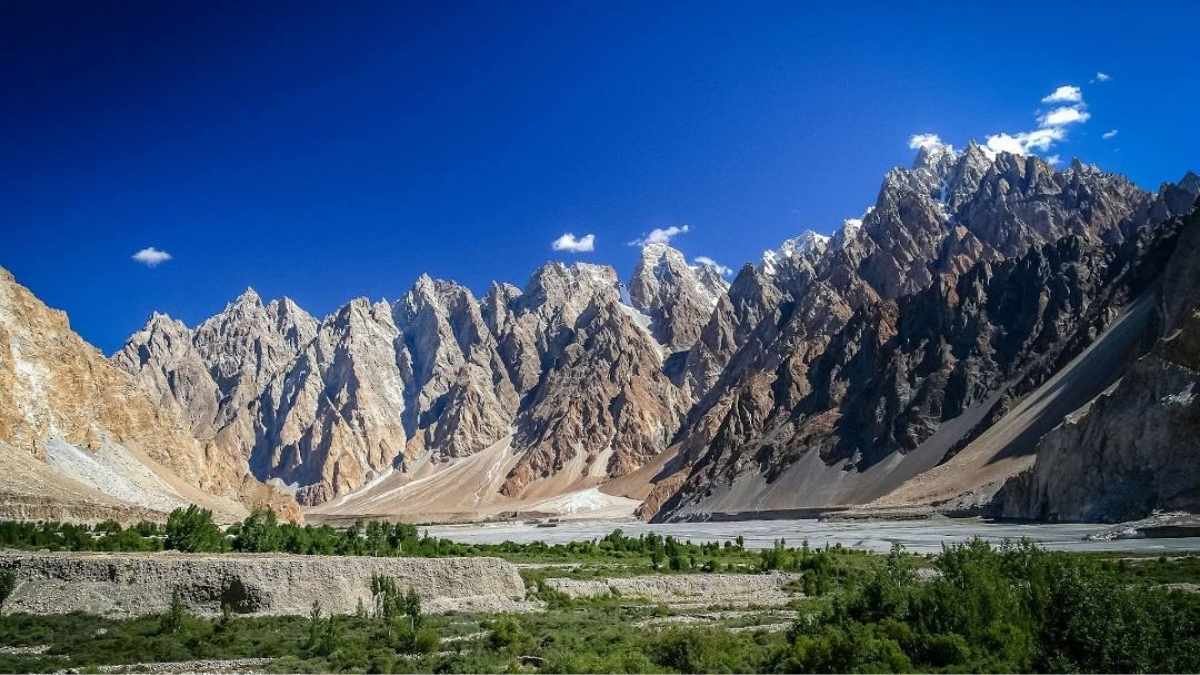Best Places to Visit in Northern Pakistan [2025 Expert Guide]


Northern Pakistan isn’t just scenic — it’s a symphony of mountains, rivers, cultures, and stories. Over the last decade, I’ve explored nearly every valley, fort, lake, and trail across the north — and in this guide, I’ll help you plan your journey better than any travel agency can.
Whether you’re planning your first family road trip, a content-creating solo escape, or an adventure deep into the unknown — this guide gives you real answers, not just bucket-list names. This isn’t your average top-10 blog. It’s a curated, experienced, and 2025-ready breakdown of the best places to visit in northern Pakistan.
Introduction: Why Northern Pakistan is a World-Class Destination
Ask any traveler who’s been here, and they’ll tell you — Northern Pakistan is among the most beautiful regions in the world. The north offers:
- Towering peaks like Nanga Parbat and Rakaposhi
- Lakes so clear they reflect your soul — like Saif ul Malook and Attabad
- Forts older than some countries (Baltit, Altit, Shigar)
- Valleys alive with wildflowers, pine forests, and peaceful trails
- Cultures full of warmth — Hunza, Wakhi, Kalashi, Kashmiri, Pashtun
Yet despite all that, most blogs just give you short blurbs without explaining why these places matter — or how to plan your journey like a local. That’s what we’re here to change.
Let’s begin with the places you absolutely shouldn’t miss in 2025.
Top Places to Visit in Northern Pakistan (Must-See Regions)
Hunza Valley (Gilgit-Baltistan)
Why visit: Hunza is timeless. Surrounded by snow-covered peaks and soaked in rich heritage, it’s often the first stop for travelers seeking both serenity and structure. You’ll find high-altitude lakes, traditional stone forts, and one of the most peaceful communities in all of Pakistan.
Top spots: Baltit Fort, Altit Fort, Attabad Lake, Eagle’s Nest Viewpoint, Hopper Glacier, and Passu Cones.
Best for: Families, first-timers, photographers, solo travelers, and even seniors.
Best time to visit: April to October for pleasant weather and lush scenery. Winter (Nov–Feb) for snow and serenity — but access is limited.
Insider Tip: Wake up before dawn and catch the sunrise from Duikar (Eagle’s Nest). The light hits Ultar Peak, Ladyfinger, and Rakaposhi in layers — it’s a moment you’ll remember for years.


[Suggested image: Tourist taking photos at Attabad Lake or a sunrise at Eagle’s Nest]
Skardu Valley (Gilgit-Baltistan)
Why visit: If Hunza is serene, Skardu is raw and wild. This is where you’ll find Pakistan’s true mountain frontier. From the high-altitude desert of Katpana to the mirror-like waters of Upper Kachura Lake, Skardu offers surreal landscapes that shift with every mile.
Top spots: Upper & Lower Kachura Lakes, Shigar Fort, Deosai National Park, Manthoka Waterfall, and the Katpana Cold Desert.
Best for: Adventure travelers, nature lovers, couples, vloggers, and those escaping city life.
Best time to visit: May to September — Deosai is only accessible in summer. July offers the best wildflower bloom in the plains.
Insider Tip: If you plan to visit Deosai, leave early (before 8 AM) and book a local jeep in advance. The morning mist over the plains is pure magic — and best seen before the tourist rush.
Naran Kaghan Valley (Khyber Pakhtunkhwa)
Why visit: Naran and Kaghan are two of Pakistan’s most iconic tourist destinations. Known for alpine meadows, glacial lakes, and towering peaks, the valley offers something for everyone — from road trippers to nature seekers. It’s one of the easiest high-altitude destinations to access by car.
Top spots: Lake Saif ul Malook, Lulusar Lake, Babusar Pass, Ansoo Lake, Batakundi, and Jalkhad.
Best for: Families, couples, first-time visitors, and those short on time but looking for high visual impact.
Best time to visit: Mid-June to early September. Babusar Pass typically opens in mid-June after snow clearance.
Insider Tip: Start your day early and reach Saif ul Malook before 9 AM to enjoy the calmest water reflections. Later in the day, it becomes crowded and noisy, especially on weekends.
Fairy Meadows and Nanga Parbat Base Camp
Why visit: If you’re seeking dramatic mountain scenery with a touch of adventure, Fairy Meadows delivers. It’s one of the best places to see Nanga Parbat — the ninth-highest mountain in the world — up close, without needing mountaineering skills.
Top spots: Fairy Meadows campsite, Reflection Point, Beyal Camp, Nanga Parbat Glacier, and Raikot Bridge Jeep Track.
Best for: Hikers, nature photographers, backpackers, and adventure couples.
Best time to visit: June to August for optimal trail access and weather. May can be chilly and paths muddy.
Insider Tip: Book your cottage in advance — there are limited spots with direct views of Nanga Parbat. Avoid tents unless you’re used to alpine cold.
Swat Valley (Khyber Pakhtunkhwa)
Why visit: Swat blends natural beauty with deep cultural history. Often called the “Switzerland of the East,” it offers forests, rivers, ski slopes, and archaeological sites — all within a day’s drive from major cities like Islamabad and Peshawar.
Top spots: Malam Jabba, Kalam, Bahrain, Fizagat Park, Marghazar, Swat Museum, and Butkara Stupa.
Best for: Families, culture seekers, students, and tour groups.
Best time to visit: March to October. Winter is ideal for skiing in Malam Jabba, while spring brings cherry blossoms and vibrant green valleys.
Insider Tip: Visit in March for a quiet, flower-filled experience. Most tourists arrive in June, so the shoulder season is perfect for relaxed travel.
Neelum Valley (Azad Jammu & Kashmir)
Why visit: Neelum Valley is a slice of Kashmir that feels untouched. River views, pine forests, and wooden villages define its charm. It’s less commercial than Swat or Naran, making it a favorite among slow travelers and nature enthusiasts.
Top spots: Keran, Sharda, Sharda University Ruins, Kel, Arang Kel, Taobat, and the Neelum River Drive.
Best for: Couples, peaceful getaways, and travelers who want to escape crowds and commercial resorts.
Best time to visit: May to September. Avoid traveling during the monsoon due to frequent landslides and road blockages.
Insider Tip: Plan to hike from Kel to Arang Kel rather than using the cable car — the trail is peaceful, scenic, and less crowded than expected.


Image source: Wikipedia
[Insert suggested visual: A traveler walking across a wooden bridge toward Arang Kel village, with the Neelum River below]
Hidden Gems You Shouldn’t Miss
Kumrat Valley (Upper Dir, Khyber Pakhtunkhwa)
Why visit: Still untouched by mass tourism, Kumrat is a forested wonderland filled with waterfalls, alpine rivers, and majestic pine trees. It offers the kind of raw, off-grid experience that’s hard to find elsewhere — especially for those who prefer tents to hotel rooms.
Top spots: Jahaz Banda Meadows, Panjkora River, Kumrat Waterfall, Do Kala Chashma, Kala Chashma Lake, and Katora Lake (trekking required).
Best for: Campers, trekkers, content creators, and offbeat travelers.
Best time to visit: May to September. Snowfall blocks access in winter, and spring sees lush greens and wildflowers.
Insider Tip: Bring your own gear or hire locally in Thal. Mobile network is weak, so let family know in advance and enjoy a full digital detox.
Naltar Valley (Gilgit Region)


Why visit: Naltar is often overshadowed by Hunza and Skardu — but it’s a hidden treasure. Known for its ski slopes in winter and multi-colored lakes in summer, Naltar feels like a postcard that’s been kept secret by photographers.
Top spots: Satrangi Lake, Blue Lake, Ski Slope (in winter), Naltar Bala and Naltar Pine forests.
Best for: Nature lovers, winter tourists, photographers, and families looking for quieter alternatives to Hunza.
Best time to visit: May to October for lakes; December to February for skiing.
Insider Tip: The jeep ride from Gilgit to Naltar is rough and thrilling. Leave early in the day and hold your camera — the views are worth the bumps.
Khunjerab Pass (Pak-China Border, Gilgit-Baltistan)
Why visit: Khunjerab Pass is the highest paved border crossing in the world at over 15,000 feet. With snow-covered mountains, grazing yaks, and the Karakoram Highway winding through jagged peaks, it’s a surreal experience — especially for those who’ve never seen the roof of the world.
Top spots: Khunjerab National Park, Border Gate, Snow Leopard conservation zone (rare), and the Karakoram Highway stretch from Sost to the top.
Best for: Road trip lovers, international tourists, altitude chasers, and adventure seekers.
Best time to visit: May to October. The pass is closed in winter due to extreme snow and oxygen drop.
Insider Tip: Oxygen levels are low at this altitude — take your time, hydrate well, and avoid sprinting even for photos.
Passu Village & Glacier Region (Hunza)
Why visit: Passu is one of the most visually iconic spots in Pakistan. Home to the famous Passu Cones, it also features glaciers, stone-walled paths, and the dramatic Hussaini Suspension Bridge — known as one of the most dangerous bridges in the world (but safe for guided walks).
Top spots: Passu Glacier, Batura Glacier, Passu Suspension Bridge, Borit Lake, and Gulmit village.
Best for: Landscape photographers, vloggers, adventure couples, and culture tourists.
Best time to visit: April to October. Spring and early summer offer clear skies and golden light on the cones.
Insider Tip: Visit the bridge in early morning for better photos and less wind. Carry water and gloves — the wood gets slippery if misty.


[Insert visual idea: Wide landscape showing Passu Cones with a person walking on the suspension bridge in the foreground]
How to Plan Your Northern Pakistan Trip (2025 Travel Tips)
Now that you know where to go, let’s talk about how to plan your trip the right way. Northern Pakistan can be magical, but it requires some prep. Here’s what you need to consider before packing your bags:
Best Time to Visit by Region
- Hunza, Skardu, Fairy Meadows: April to October (summer preferred)
- Naran Kaghan, Neelum, Kumrat: Mid-June to early September
- Naltar (for skiing): December to February
- Khunjerab Pass: May to October only (border closes in winter)
Transport Options
- Private car rental gives the most flexibility
- Bus services available to Swat, Naran, Hunza, Skardu (e.g. Faisal Movers, NATCO)
- Jeep bookings are essential for Deosai, Fairy Meadows, and Kumrat
Safety Tips
- Always check road/weather conditions, especially after rain or snow
- Travel with local guides in remote areas like Fairy Meadows and Deosai
- Keep your CNIC or passport with you at all times (especially near border zones)
Budgeting Suggestions
- Backpackers: 3,000–5,000 PKR/day (guesthouses, jeeps, food)
- Mid-range: 8,000–12,000 PKR/day (private transport, hotels, meals)
- Luxury: 20,000+ PKR/day (resorts, private tours, curated experiences)
Booking hotels or guesthouses in advance during peak season is highly recommended. Mobile signals are weak in many regions, so download offline maps and print reservations if needed.
Where Should You Go First?
If this is your first trip north, start with Hunza and Skardu for a balanced experience of natural beauty, culture, and comfort. If you’re returning, explore Neelum or Kumrat for a more raw, immersive connection with nature.
Each destination in northern Pakistan has its own rhythm. You don’t need to rush to visit all at once. Take your time. Absorb the landscape. Talk to the locals. Drink spring water from a roadside pipe. Watch stars in silence. That’s what travel here is really about.
TrulyPakistan.net is committed to sharing real, honest, and practical travel advice from experts who’ve been there. We don’t sell tours — we tell the truth.
If you found this guide helpful, explore more curated travel guides and planning tips right here on our blog. Got a question about a destination or looking for a custom itinerary? Reach out to us — we’ll guide you like a friend, not a sales agent.


Amna Nazir says:
I really love how thoughtfull this post is as i was looking for a guide to visit northern areas and the way this post is informative is insane and i love it . and teh amazing part is that you guys have done a great job in search engine optimization because poping this up on the right time is because fo the seo you guys have done . hatss off:)
ZunNurain Khalid says:
Glad you liked!!